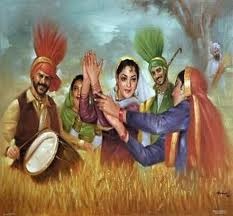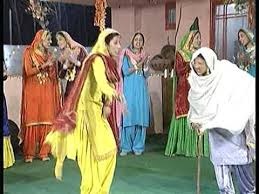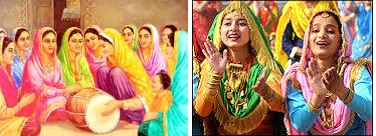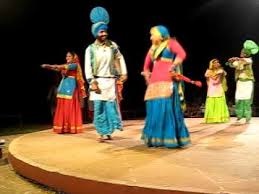
India is home to the diverse cultures that unite through its various dance forms and beautiful music. The northern part of India is well known for its exuberant dance and lively people. Bhangra for men and Giddha for women are the dance forms gifted from the state of Punjab for all social occasions, festivals and weddings. Gidda is a dance form performed mostly by Punjabi women at the social gatherings. It is usually accompanied by local folk songs, clapping of hands and the sound of a small drum or Indian Dholki. It is a lively, colourful and energetic dance. The rhythmic clapping of the hands and the boliyan or traditional songs makes it very dramatic and hilarious. Giddha is the oldest of all dance forms originating in India and is derived from the ancient ring dance. Let us learn more about this dance.
Giddha dance was prevalent in India from the pre–partition period, which was the period before 1947.The origin of Giddha dance movements can be traced to the undivided region of Punjab comprising of Lahore, Gurdaspur and Amritsar, now in Pakistan and India. Giddha as a dance form flourished in these regions. Migrants from this area settled in the Malwa region of the present–day India and had brought the tradition here. Initially, it was performed to the sound of clapping of the hands. As a part of the tradition, women members of the grooms’ family were not allowed to participate in marriage rituals and as a result, they used to play pranks on men. The men had to sing and dance to stop them. Gradually, women began dancing within closed circle amongst them. Eventually, the Giddha became an essential part of the festivities, especially during marriage ceremonies. Thus, the Giddha was evolved and the male version is known as Malwai Giddha.

A type of ancient ring dance, the Giddha is performed by women. Women form a ring and each of them take turns to perform within this closed ring. One of them plays the Dholki while the others sing the boliyan and engage in the rhythmic clapping of hands. The boliyan or the traditional songs in Giddha are about the sweet and sour relations of a girl, her husband and in–laws. Ladies impersonate as men while some of them may play the roles of a mother or sister in–law. All this is done in a comical and hilarious manner. Certain signature steps are followed whereas most of the steps are random, spontaneous and involve a good amount of mimicry. Upbeat mood, bright colourful costumes and elaborate jewellery define the performance of Giddha. However, nowadays, professional troupes perform this dance on occasions and events.

A small Indian Dholki is the most commonly used musical instrument while performing Giddha but the rhythmic and spontaneous clapping of hands is what sets the mood and marks the performance. Also, among most of the major musical instruments, the Chimta or tongs, South Asia’s traditional percussion musical instrument is often used. Sometimes, a long and flat strip made of metal steel with at times, is about 7 pairs of jingles made up of metal is also used.

The costume worn by women is the common Punjabi dress consisting of a top called kameez and pants called salwar. Sometimes, some women also wear the ‘garara’ or ‘lehnga’ over a shirt or top. The dresses are very colourful, rich and are adorned with jewellery. The hair is plaited with ‘parandeh’, which are colourful accessories to beautify the hair. Men wear a turban, kurta or a shirt with jacket and a wrap around the waist while performing the Malwai Giddha.

Giddha is mainly performed by women on social occasions including weddings as a mark of celebration and festivities. It is a traditional and local dance performed within a closed circle to the exclusion of men in the earlier days. Recently, professionally trained men and women perform the male and female versions of this dance respectively.

G Kowledge of | 0 Comments >>
0 Comments
Leave Comment
Your email address will not be published. Required fields are marked.